Solid Strategy Enables Actionable Tactics
From small companies in Washington DC and New York City, to the largest corporations around the world, I’ve provided strategy, research, and design services that improve the bottom line and cut costs. I’ve created a highly successful UX course on udemy, and have written the follow-up book to that course.
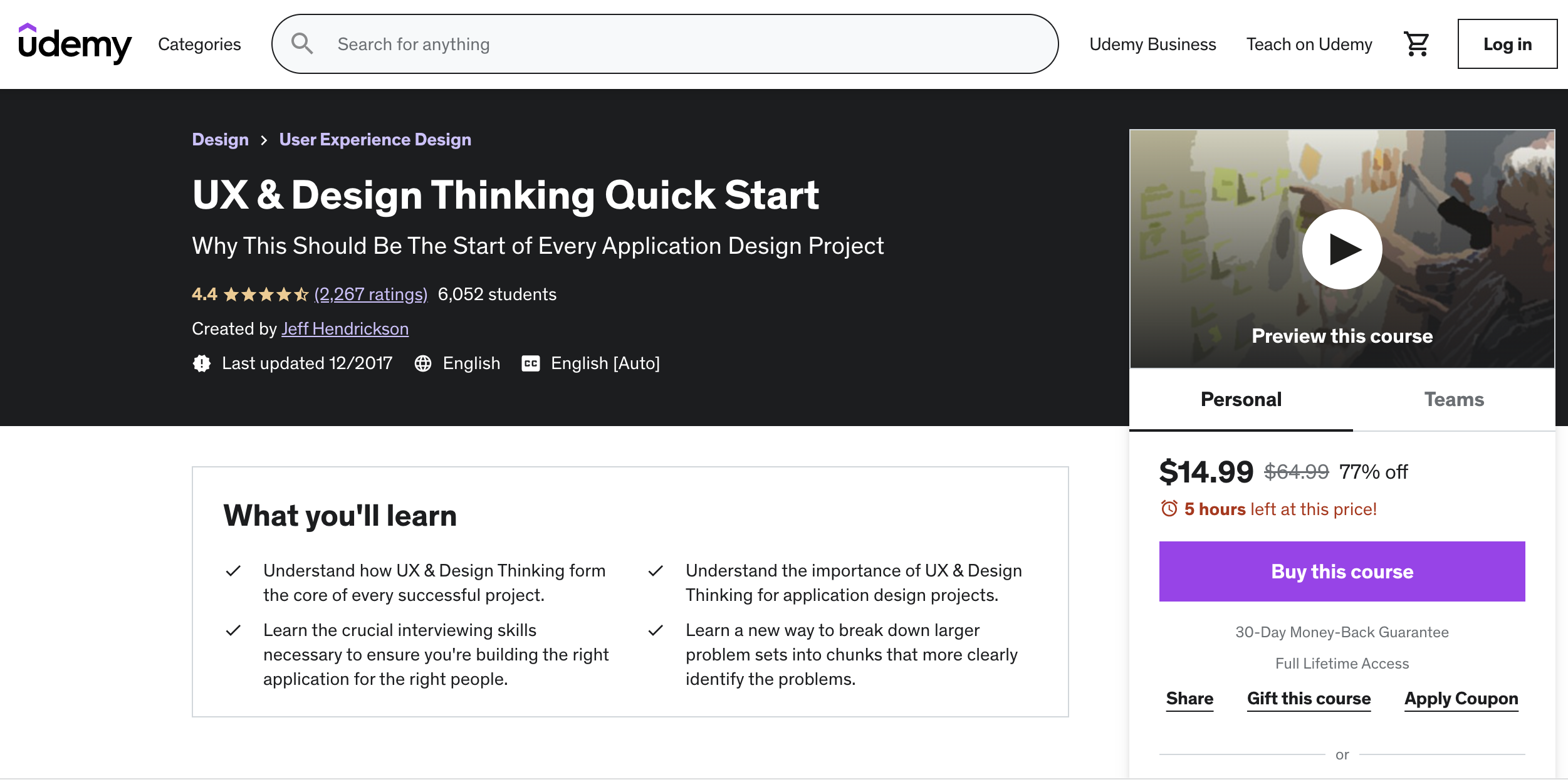
This course now has just over 13000 students and the star rating is consistently over 4.
Books
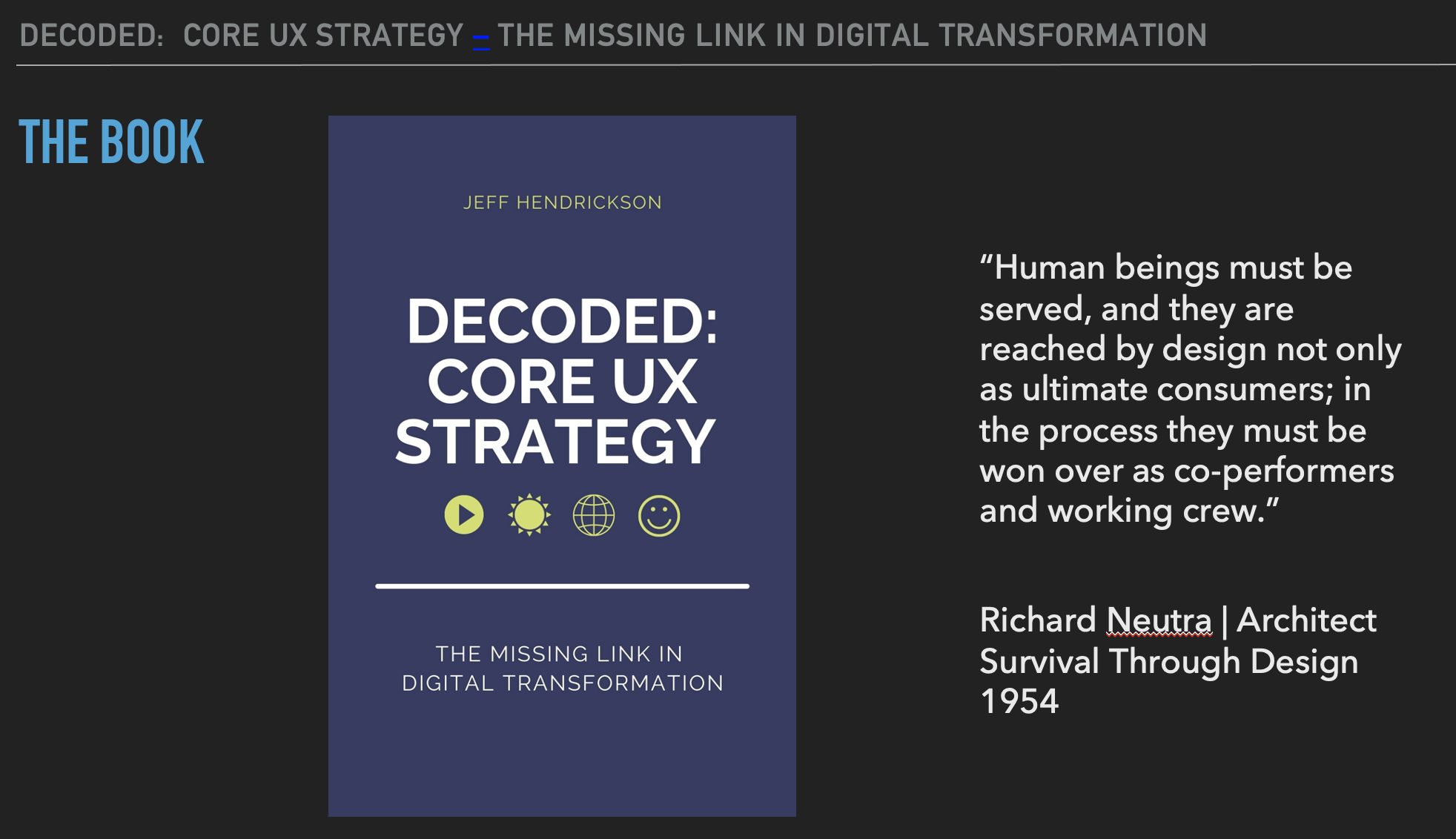
Latest publication:
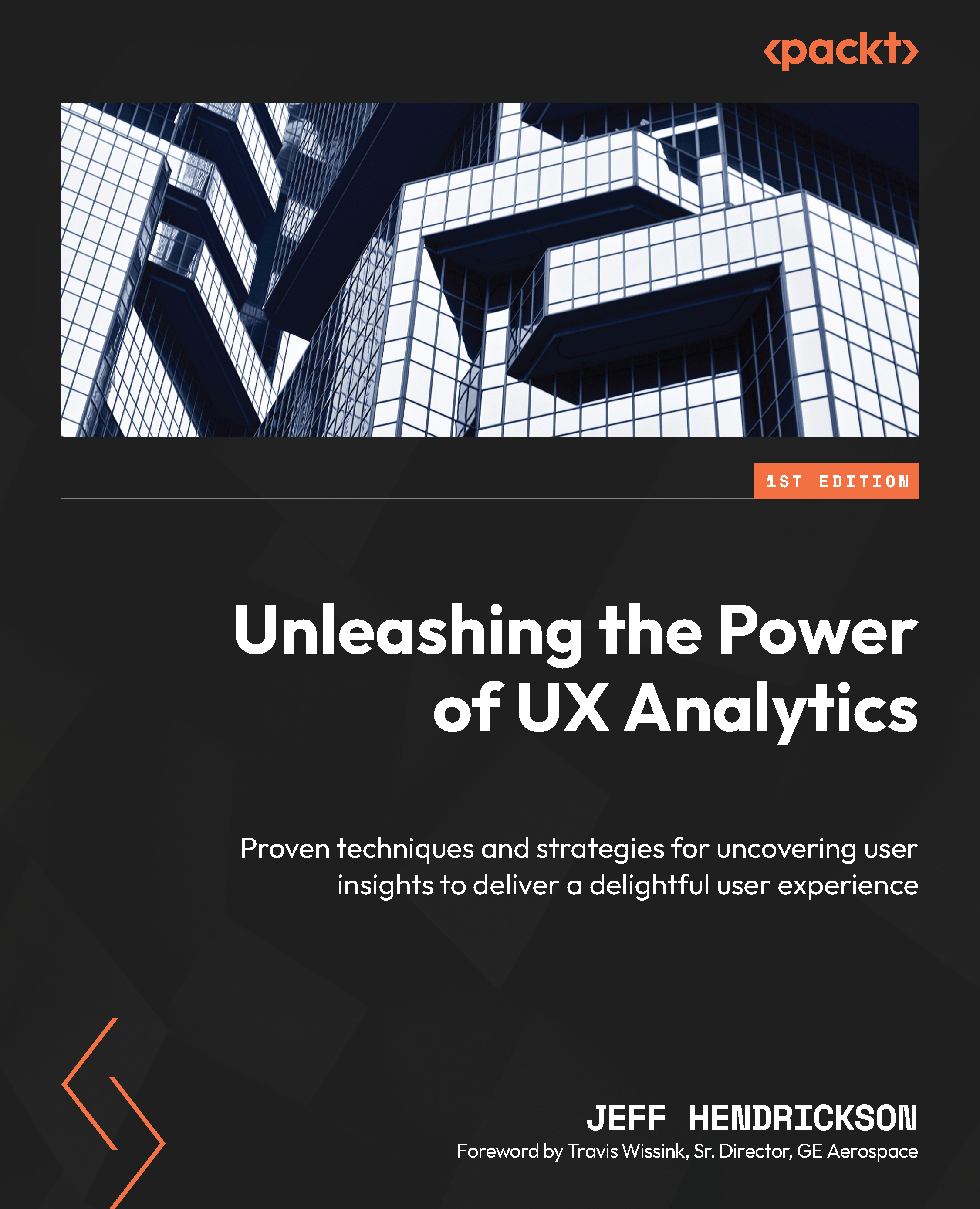
From a recent reader review:

Published with Packt in August 2023 with many strong reviews on LinkedIn by industry professionals.
Book Description:
UX analytics is a field that recognizes the significance of understanding human behavior and emotions in designing user experiences. It goes beyond mere metrics and embraces a people-centric approach. With the help of this comprehensive guide, you’ll acquire essential skills, knowledge, and techniques to establish a top-notch UX analytics practice.
Unleashing the Power of UX Analytics will equip you with the strategies and tactics necessary to effectively collect, analyze, and interpret data, empowering you to make informed decisions that enhance the overall user experience. It emphasizes the importance of empathy in comprehending user needs and desires, enabling you to create meaningful and impactful design solutions. As you advance, this book walks you through the entire UX analytics process, from setting goals and defining key performance indicators (KPIs) to implementing various research methods and tools. You’ll gain insights into user interview best practices, usability testing, and techniques for gathering qualitative and quantitative data.
Armed with the knowledge of data analysis and interpretation, you’ll be able to uncover patterns, trends, and user preferences to make data-driven decisions.
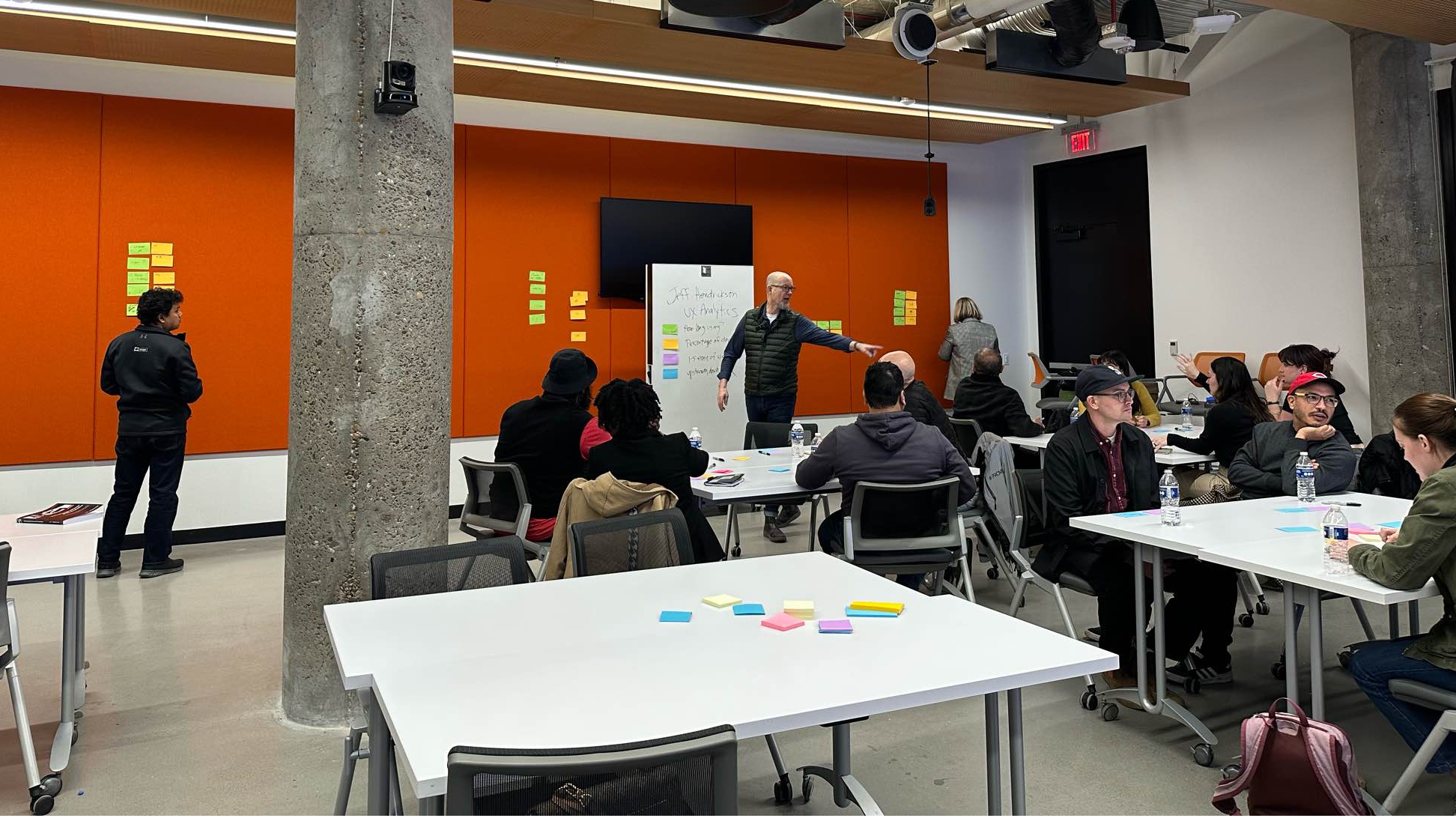
IxDA workshop based on principles from the book. Feb 2024 at UC’s 1819 Innovation building, Cincinnati.
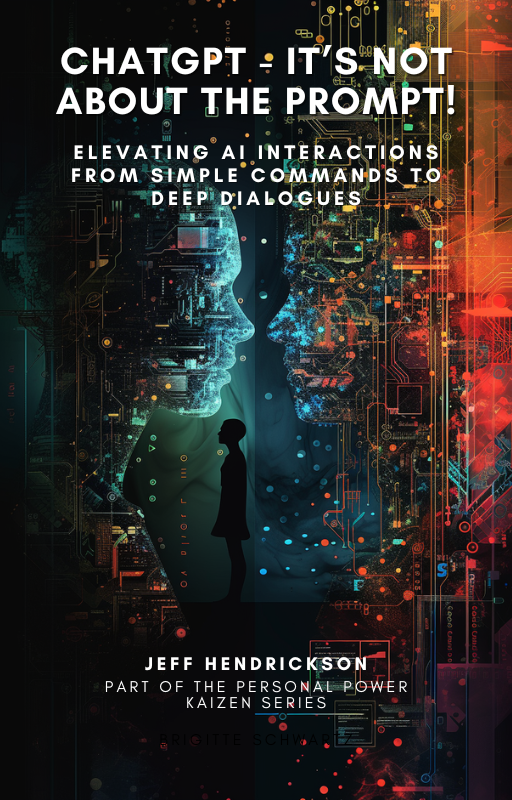
As of May 1, 2024, about 30 days from publishing this book on working with Generative AI.
Introduction: Static Prompts are Not the Answer
Artificial intelligence is progressing at an astounding pace, and the allure of finding the perfect prompt—a magical incantation that unlocks the full potential of AI—has captivated the imagination of many. However, this quest for the ultimate command misses the heart of what makes AI, particularly conversational models like ChatGPT, genuinely revolutionary. The focus on static prompts – fixed queries designed to elicit specific responses, constrains the enormous possibilities AI offers us. So, I’m proposing a paradigm shift: moving away from viewing AI as a mere tool to be commanded, to engaging with it as a dynamic partner in conversation.
The fundamental limitation of relying solely on pre-generated prompts as the silver bullet is not just about their inability to generate varied responses but, more critically, about what you lose in the process—the chance to engage the AI’s full capabilities for learning, adaptation, and nuanced conversation. Utilizing these static prompts is akin to attempting to forge a meaningful connection with another person through a script. This approach not only stifles the potential for discovery and creativity but also significantly limits genuine interaction. It’s like reducing a rich dialogue with a brilliant mind to a series of yes-or-no questions, which is unsatisfying and a profound underutilization of the tool’s potential.
UX for Interface Design
Info Apps – interactive business intelligence and knowledge management dashboards with timely, accurate, and trustable data depictions for quick and easy decision making at many role levels. I was the lead strategist and designer and worked directly with the President, Gerry Cohen, and the Chief Innovation Officer, Dr. Rado Kotorov on this project.
EMERGING MARKETS FINANCIAL ANALYSIS – INFORMATION BUILDERS

“As a financial analyst for Fidelity Investments, I need a software tool that allows me to research Emerging Markets so that I can make predictive recommendations to our investment teams with the ultimate goal of having more diverse offerings for our top customers.”
An InfoApp was designed and built by me to facilitate this ask from Fidelity. It then became the model by which we went to other financial companies, and also The Michigan State Police and other law enforcement agencies.
Resulted in a completely new program based on the software advancements of InfoApps that were presented across the country by sales managers and engineers working within established customers.
Law Enforcement Agencies
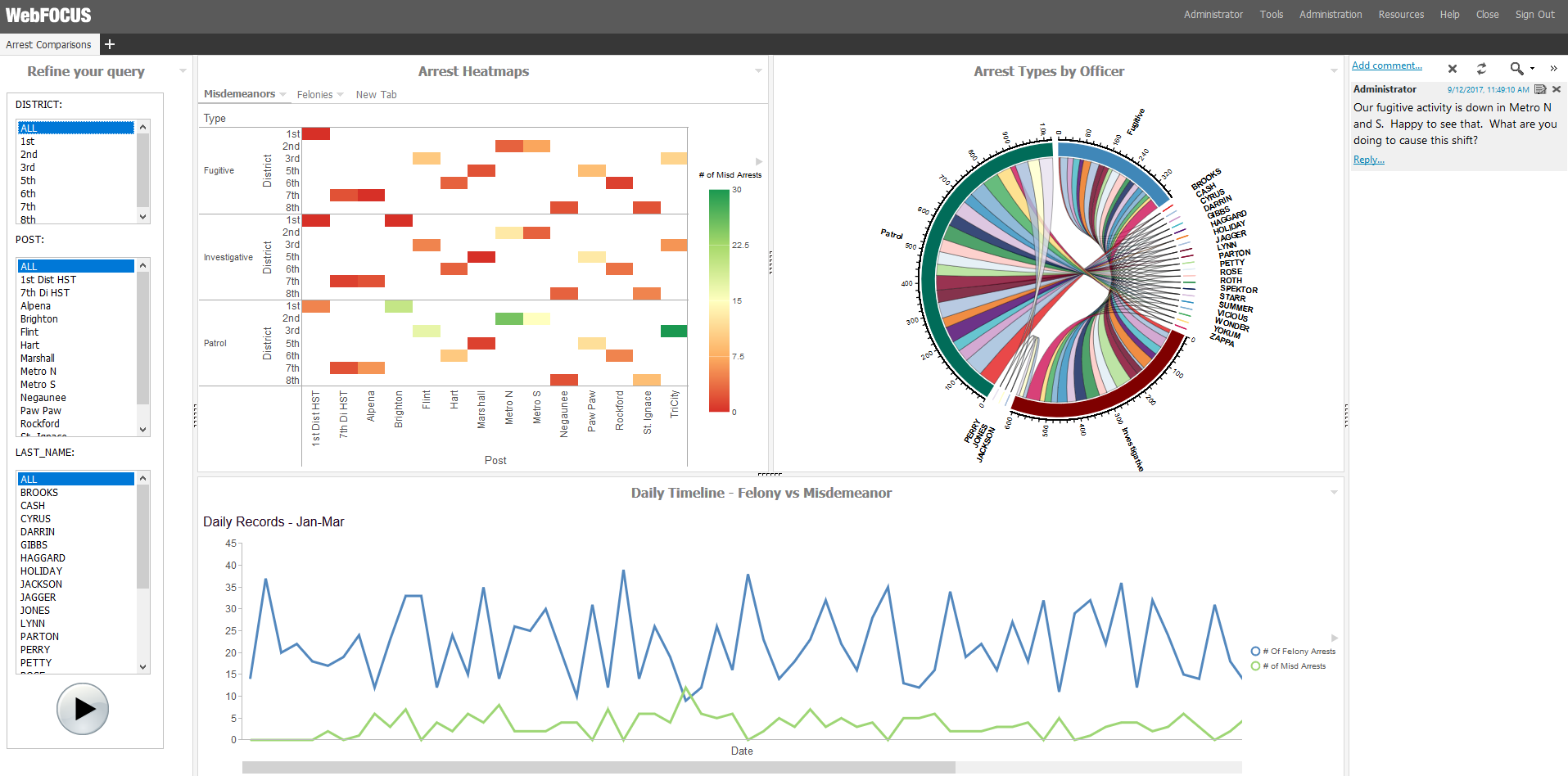
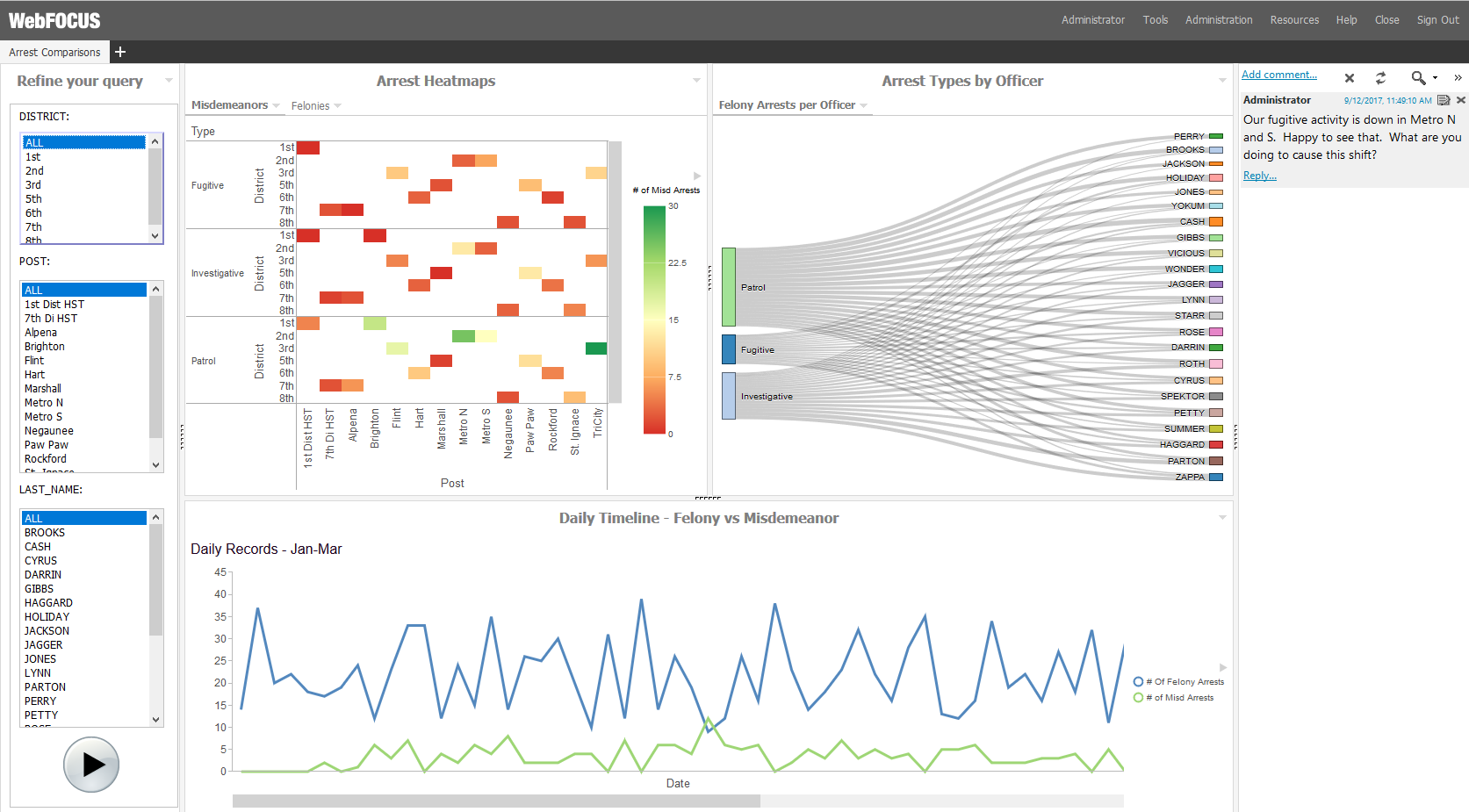
Ambulatory Operations Accelerator
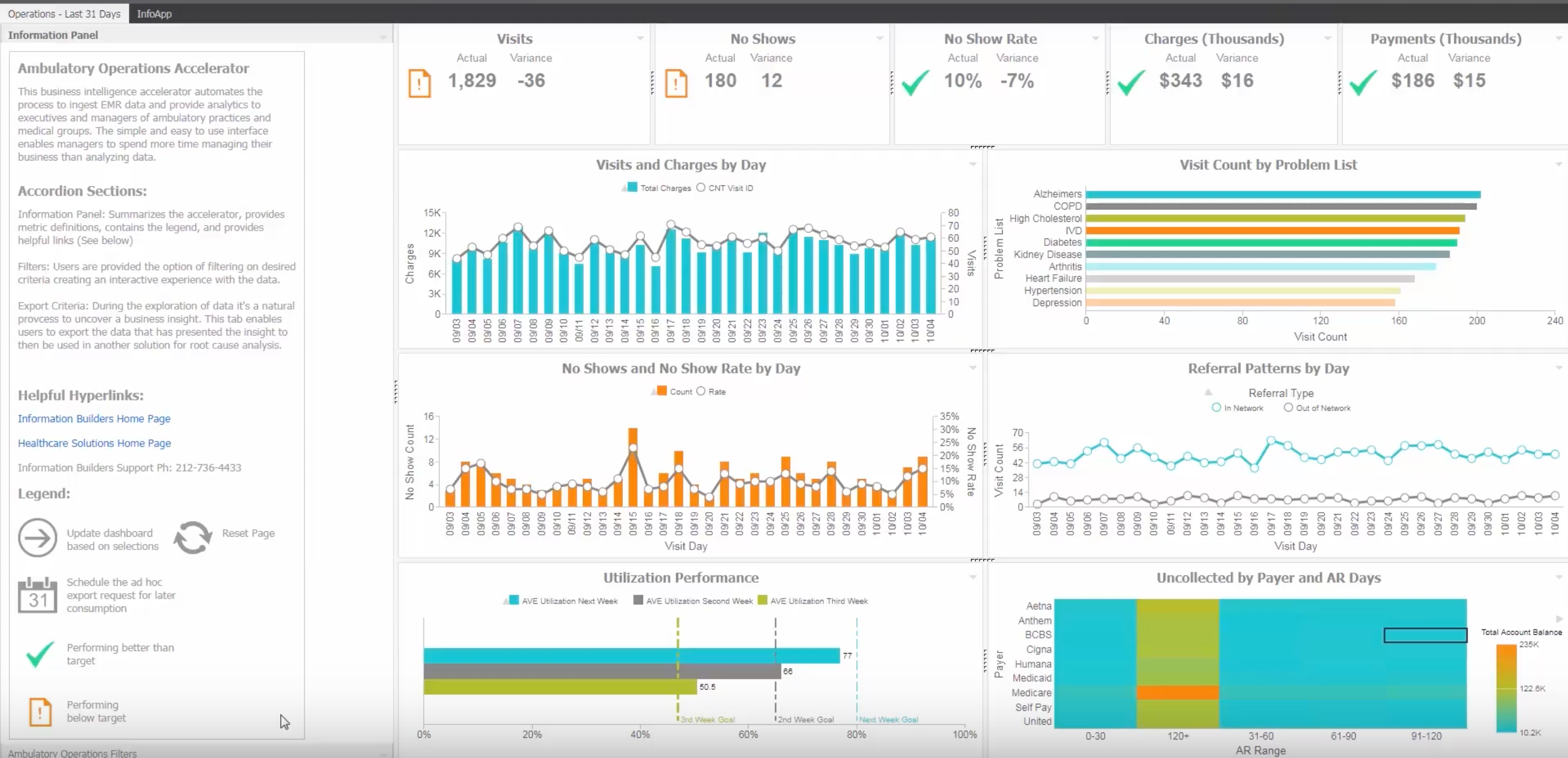
CONSTELLATION brands, new york
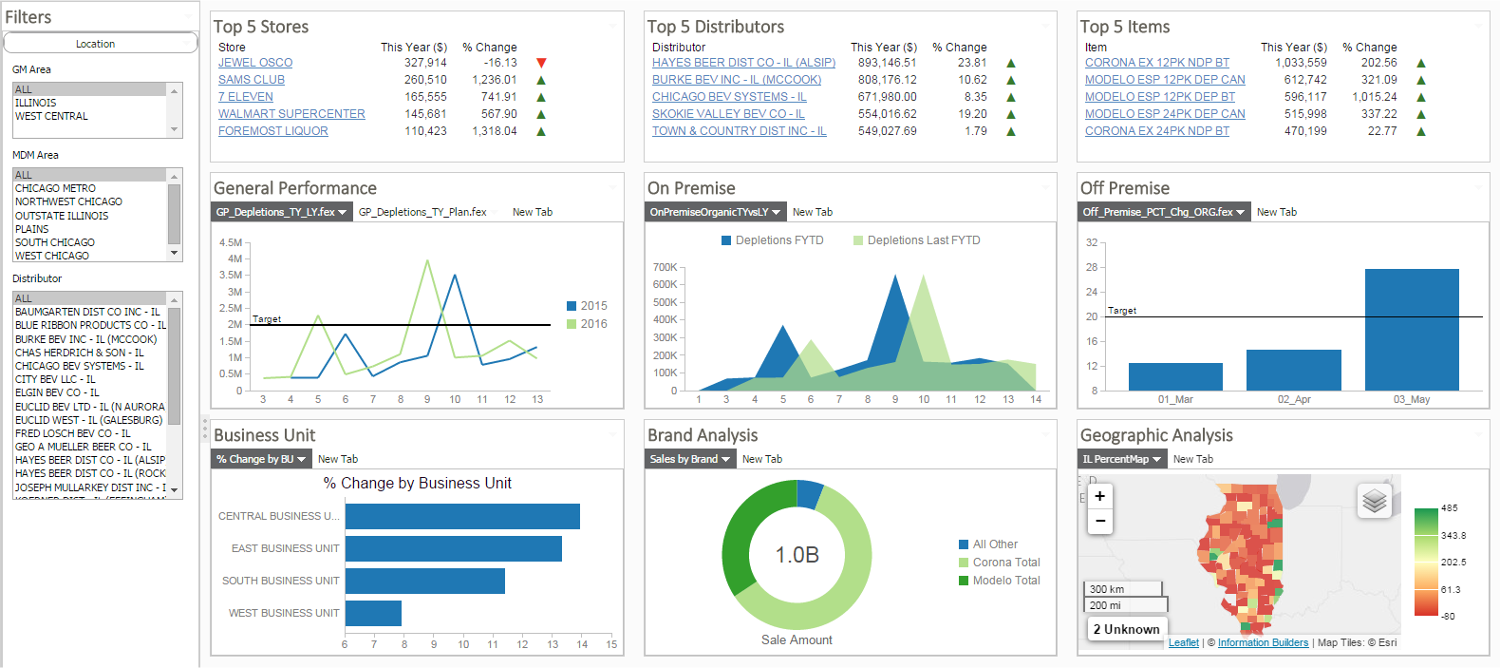
“As a senior manager for Constellation, I need a visualization tool that gives me the power to – at my finger-tips – find the most important information about my region, seeing performance in stores, with our distributors, and our best selling items. I need the ability to easily filter results for brand and geographic analysis with the added ability to change my views by myself when and as business changes either up or down.”
Resulted in upgrade of older, slower software and implementation of an InfoApp that gave the ability to see business at a glance, and also to filter or drill down to finer levels of detail for decision making.
CCAD – CORPUS CHRISTI ARMY DEPOT – GE AVIATION

“As the Production Controller for CCAD, I need better visibility into all the T700 engines coming to us for overhaul, all parts availability, staff available, and a running record of our shop performance to contract obligations with the US Military. It needs to be visual and available to the Director of Operations at CCAD so that he, the shop manager, and I can have meaningful and actionable conversations about why problems arise and how we can use our information to solve those problems and reduce our shop floor turn around time.”
Resulted in many shop floor advancements in both tools and best practices used, and workflow between the various stages of overhaul and rebuild.
And for the site director, I designed a mobile app
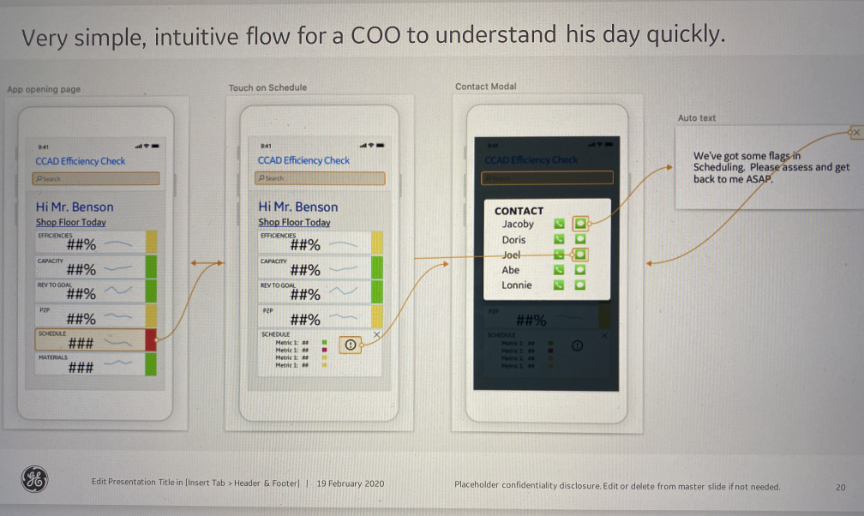
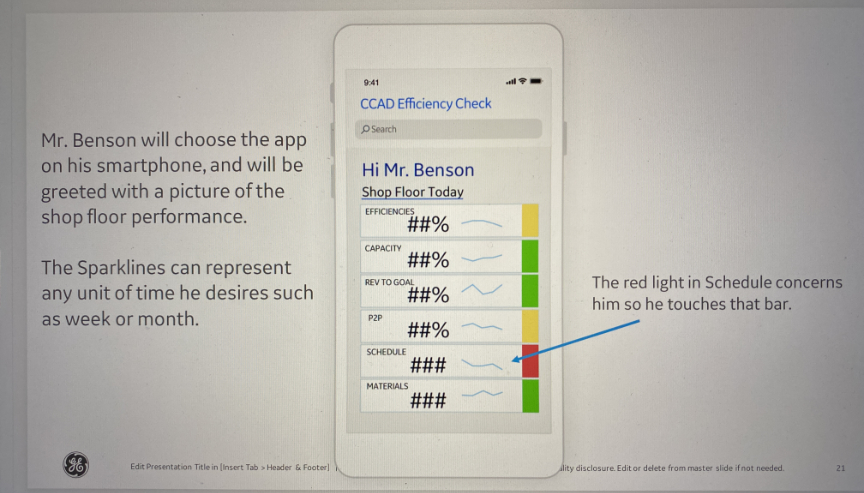
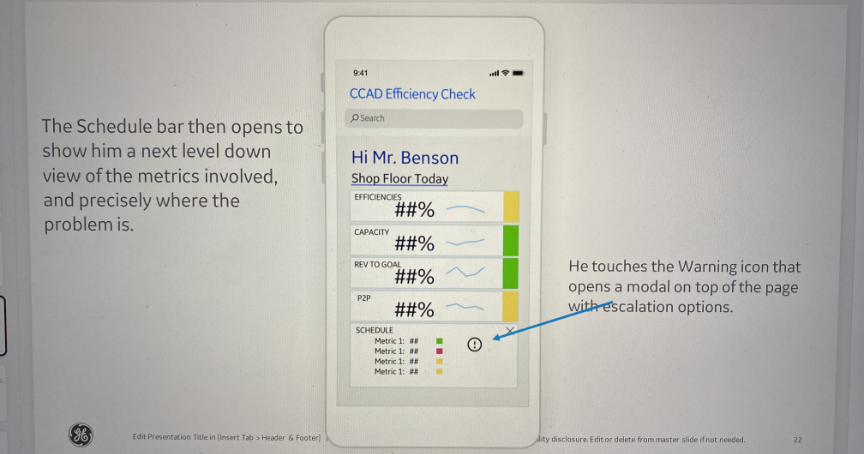
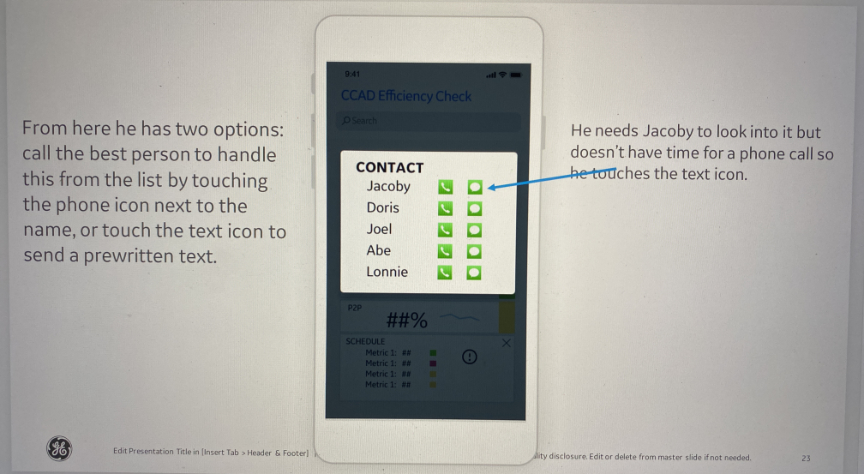
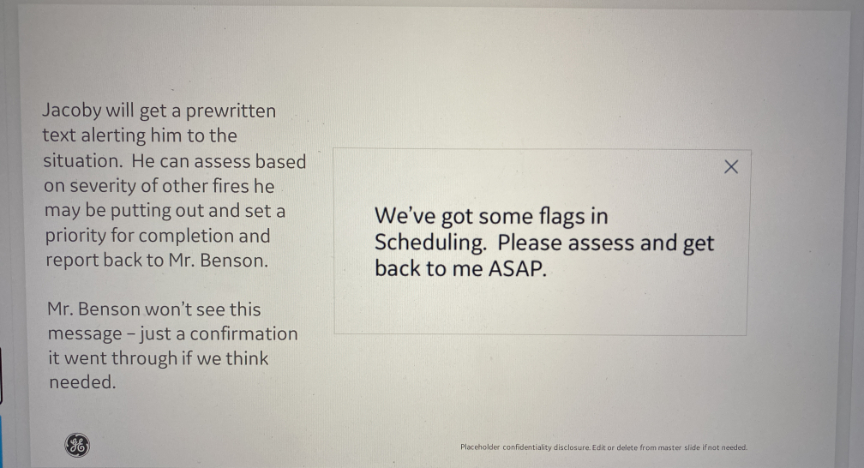
Research
Before any of the above can get designed and put into production, there must be adherence to standardized research and architecture work. While this can be achieved in many ways, the important part is to ensure that there is a cross-functional team in place.
Research protocols and best practices
A stakeholder interview is where we start to get the ask from business. This is a filled example from a recent project with GE Aviation.
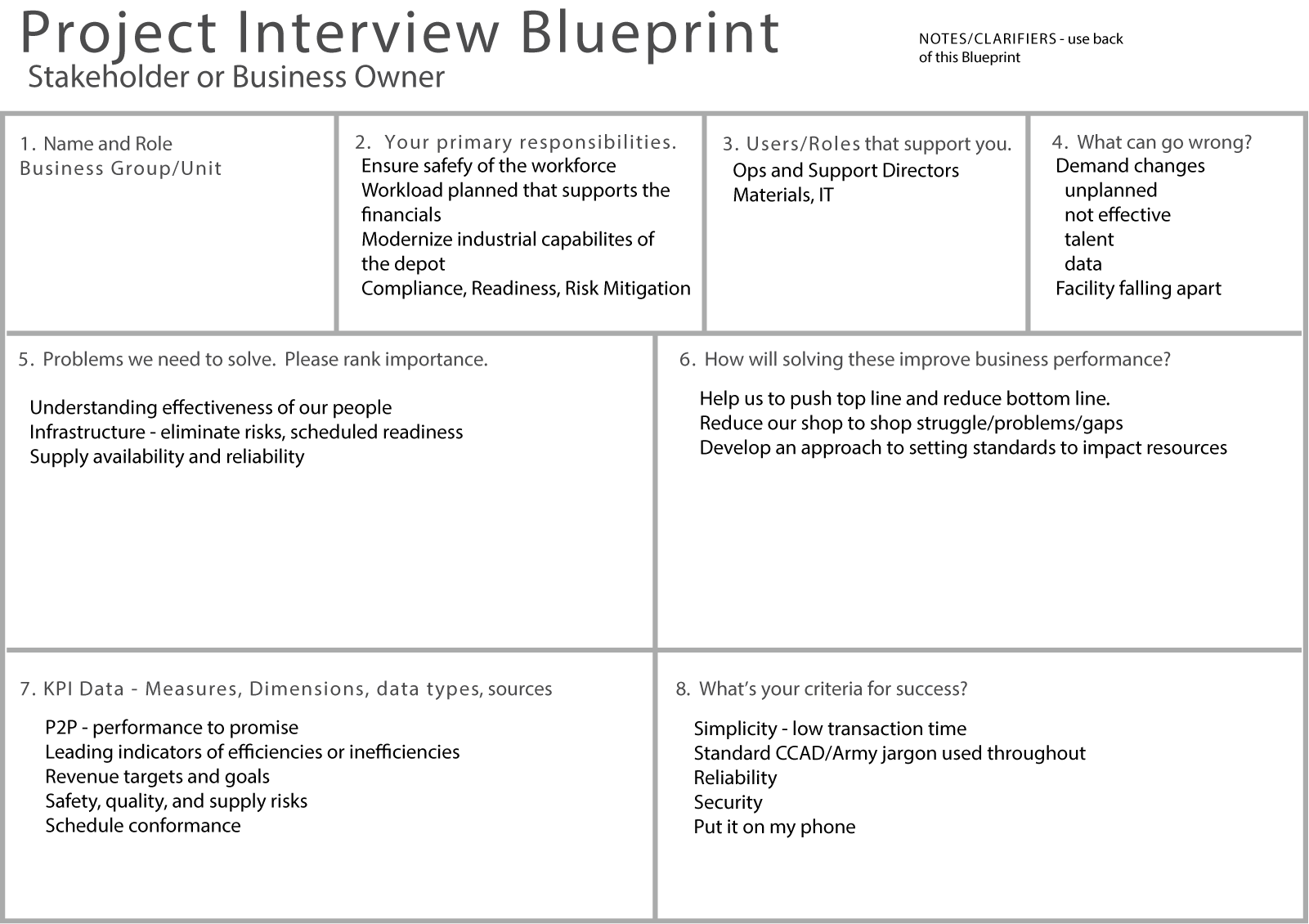
After this interview, we’ll start talking to users to get their challenges, needs, and desires.
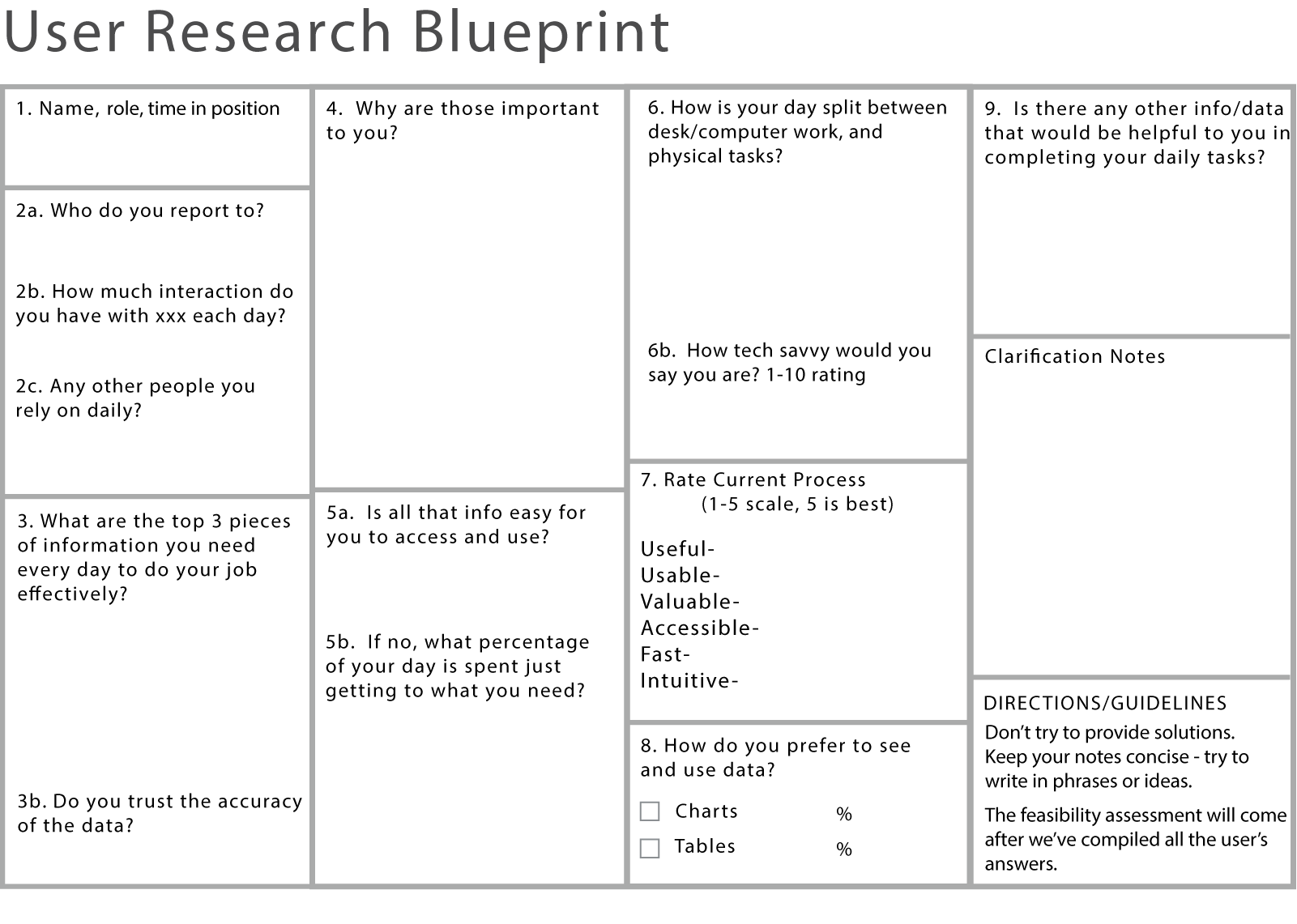
I run research sessions in a very systematic way – taught in my Udemy course – and these blueprints are filled out by the team, who are taking notes as a primary interviewer asks the questions and builds rapport with the user. After the first pass through, the primary interviewer will call on the note takers one by one to ask any clarifying questions they may have.
After gathering and analyzing all the interviews with the team, we start visual exercises to create process maps. Following are pictures and digital versions of various design thinking sessions I’ve conducted internationally.
GE Aviation, Cheltenham, UK
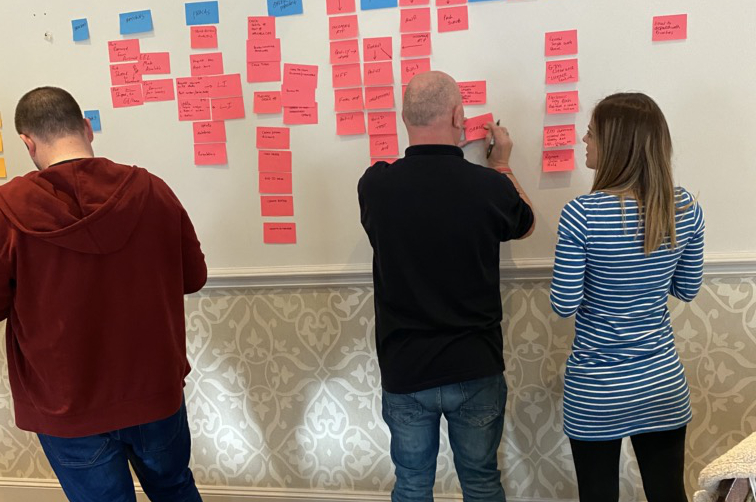
The above is from a one week session at the GE facility that makes the power systems for the F35 fighter. The goal was to streamline their processes and data flow between them, supplier, and other GE shops relied on for parts around the world.
Magellan Aerospace, Toronto, Canada
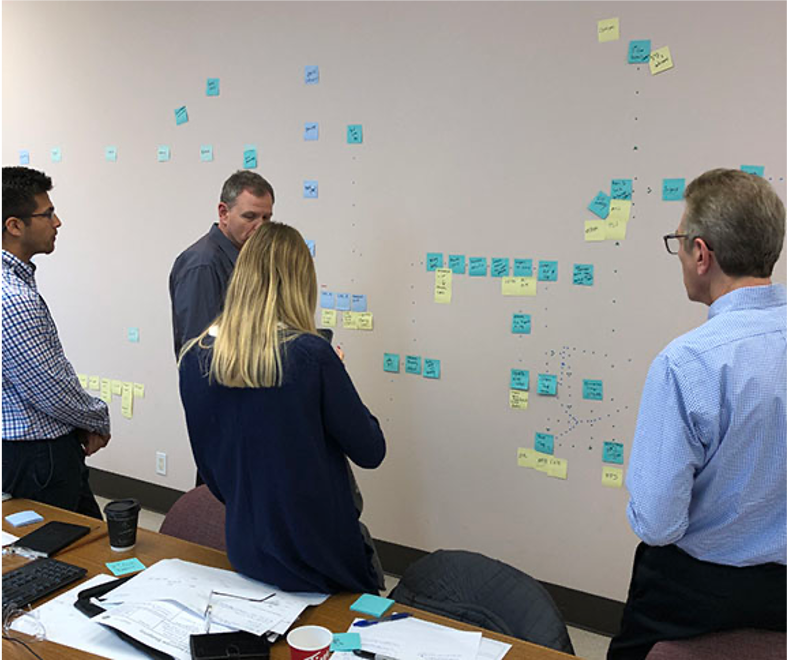
Because of our expertise, Magellan called on us to help them find data inconsistencies and gaps in their processes of receiving, inducting, and repairing GE engines that they are contracted to work on for the Royal Canadian Air Force.
Cathay Pacific, Hong Kong
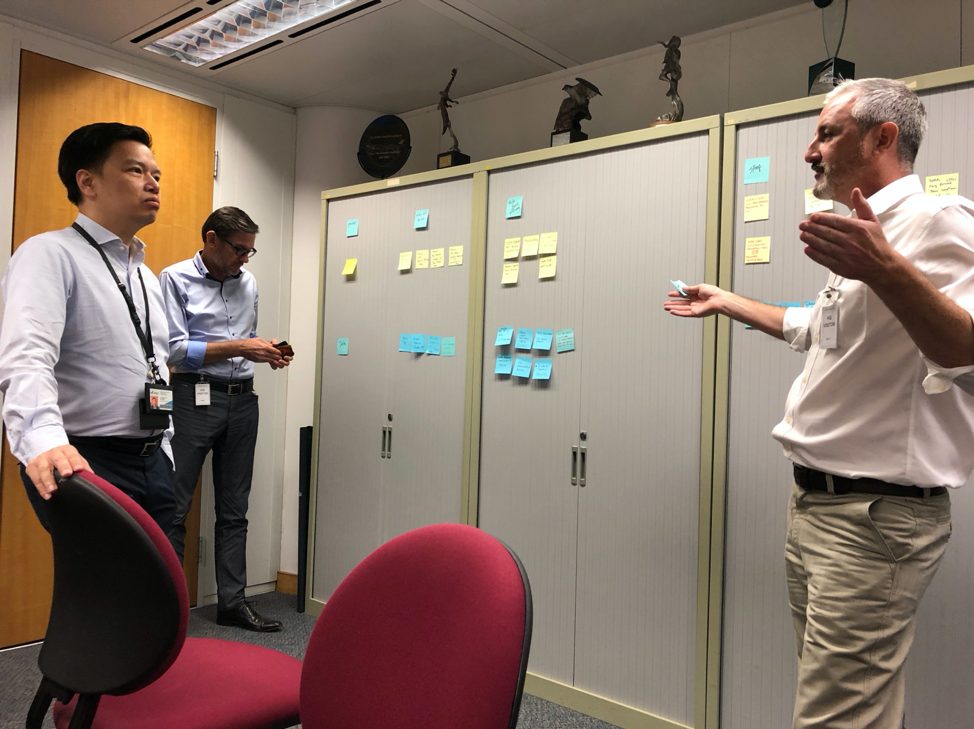
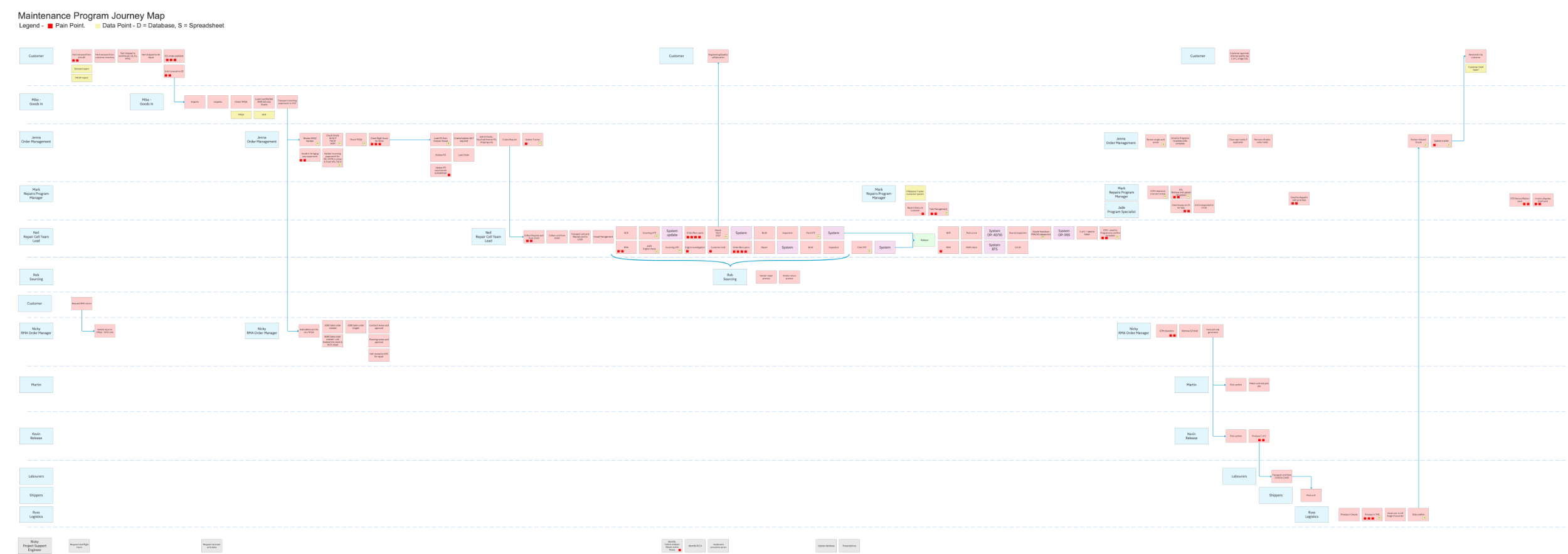
Cathay was having huge data and system silo challenges in running their airline and in getting engines off-wing and into repair shops for overhauls. We helped them identify the gaps to streamline their processes and save potential millions in just a year. We also won a renegotiated multi-million dollar contract because of the work.
A Manufacturing Company WIP Problem

This plant can’t keep track of the raw materials need to produce and ship ordered product in a timely manner. Through some quantitative research we discovered that they’re losing approximately $265,000/year in labor and machine downtime costs. This research will now lead into solution discovery with a broader team of SMEs and product management.
More examples of facilitated process flow sessions and maps:




Discovery Session on an ERP Project
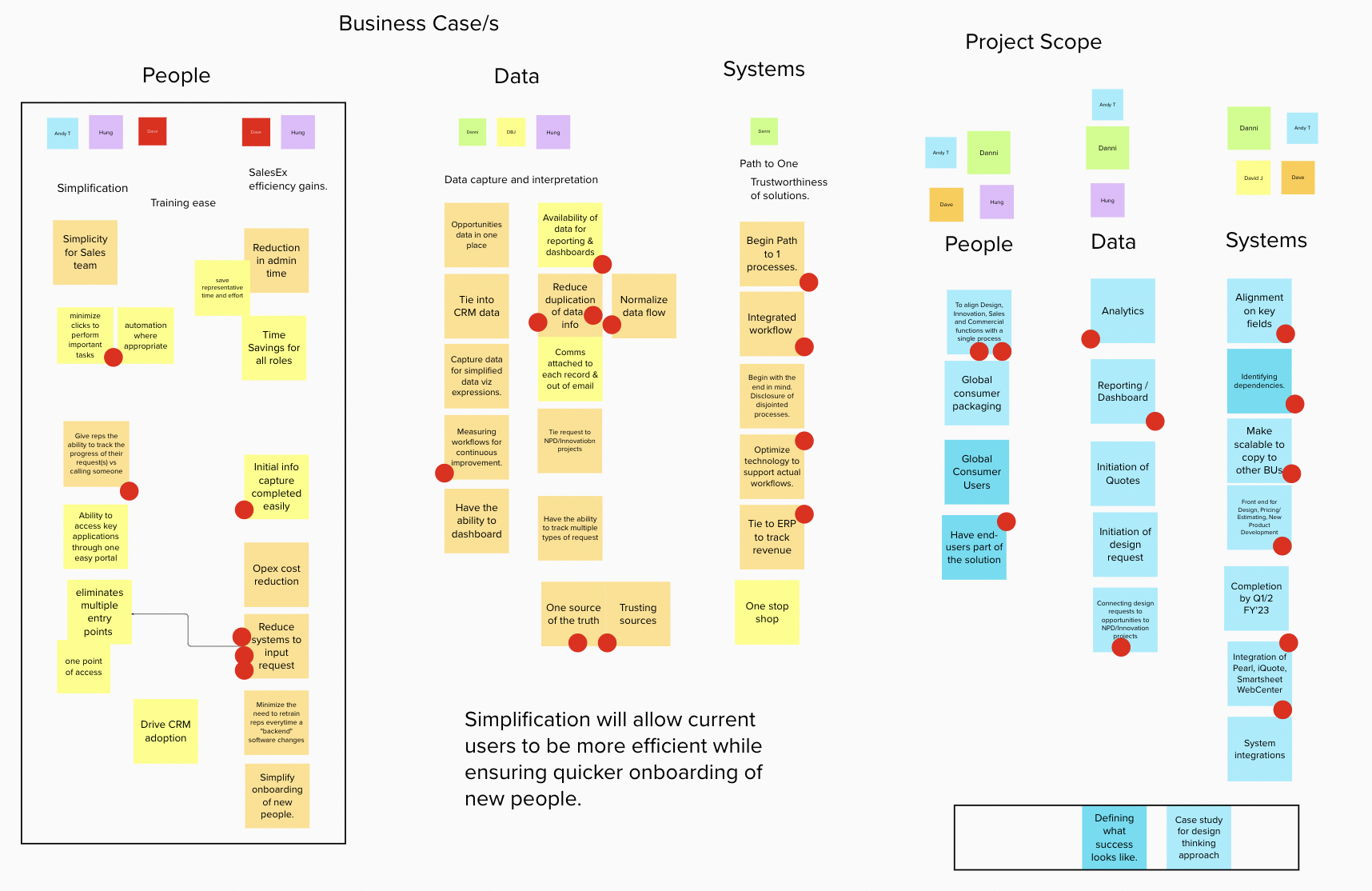
This Design Thinking discovery work was conducted over two 90 minute sessions with a core team of stakeholders and SMEs. The goal was to recapture intended ROI on the investment and the losses stemmed from the fact that it’s very difficult for some personas to use, and therefore there are workarounds, loose data buried in individual laptops, and many mistakes that cause rework and further lost dollars.
Research on Cold Chain Logistics
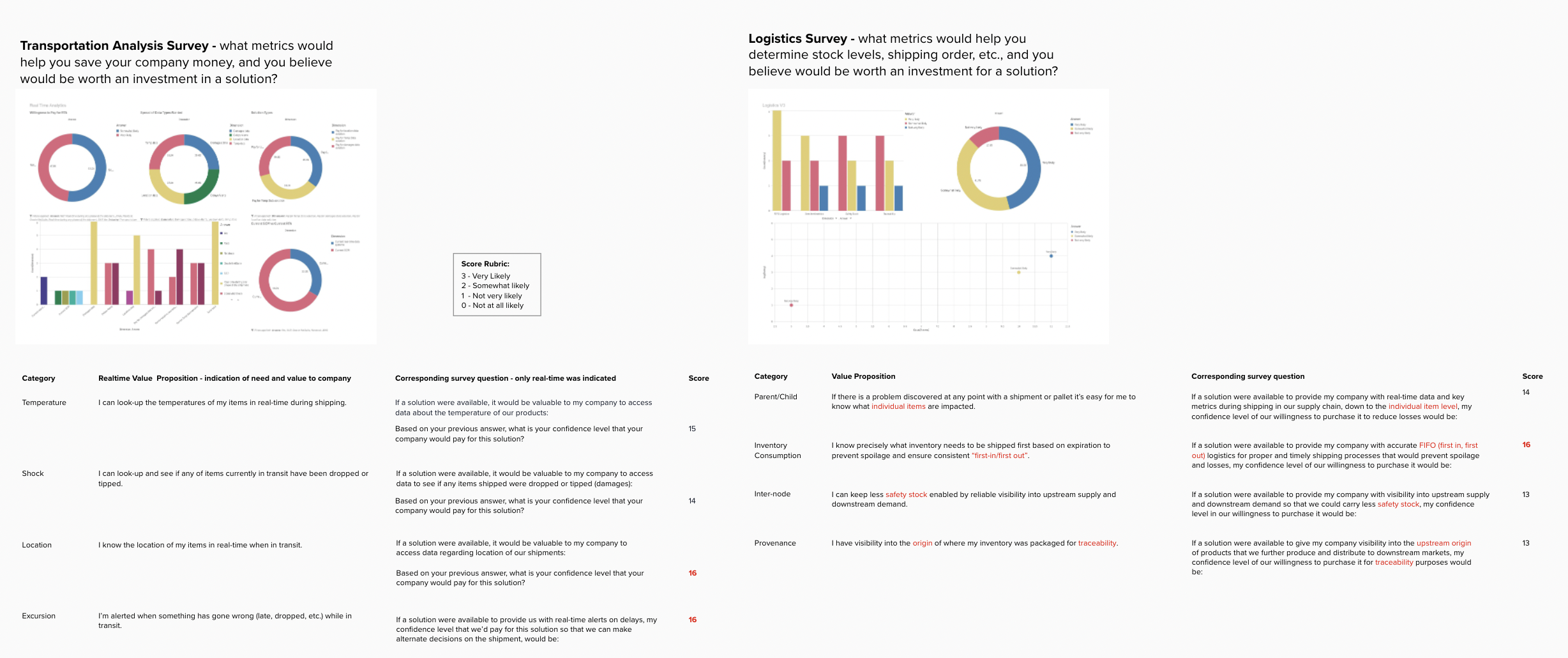
The supply chain for products that need refrigeration and a consistent temperature range from dock to dock is complicated and automation is currently used by only the largest distributors. Our goal in this project was to understand the supply chain and capture the pain points and challenges that cost a company money because of a high percentage of temperature excursions and exceptions that cause an order or entire shipment to be lost.
Setting Context Using the Theory of Constraints
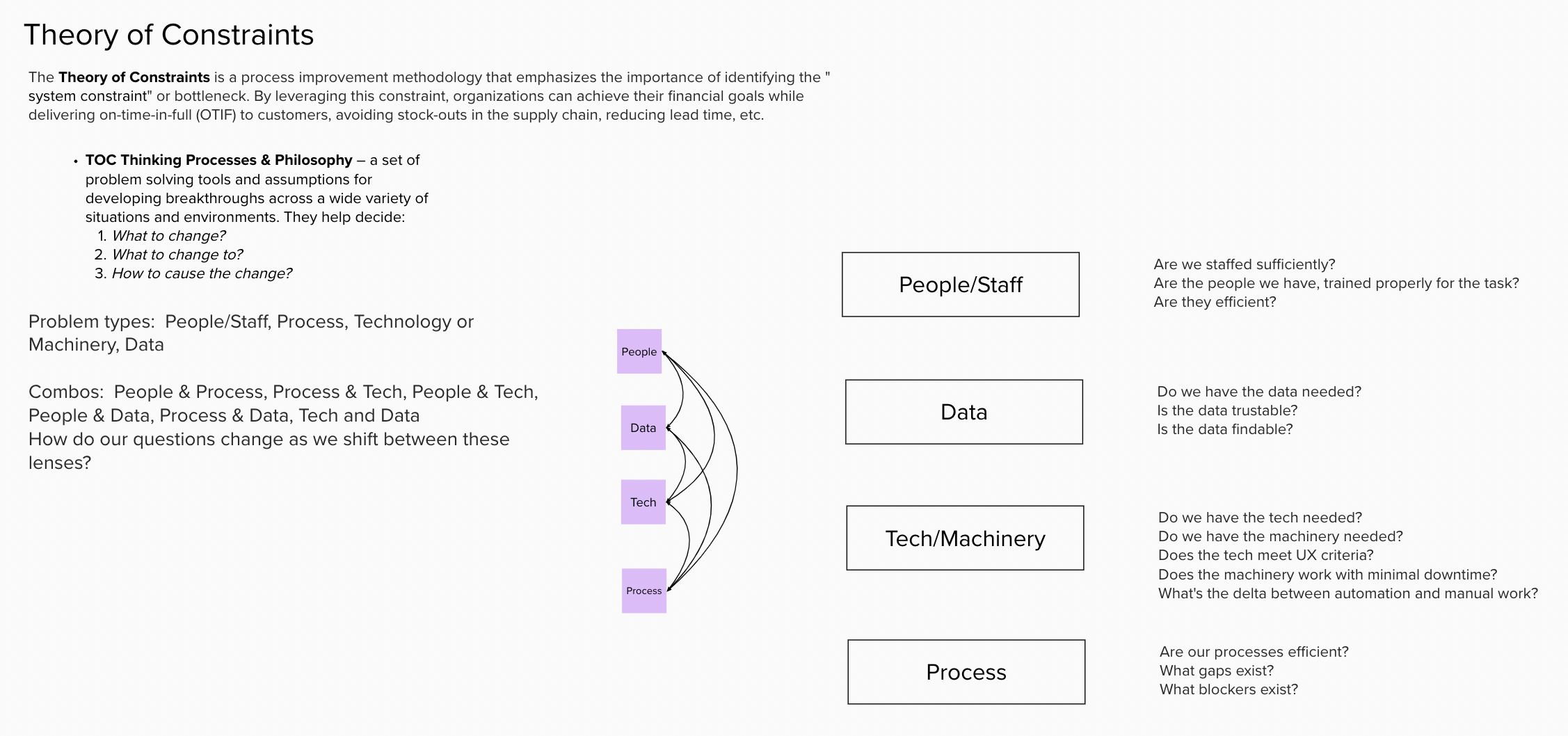
The Theory of Constraints is a great strategy and research tool because it can help a core team focus on the main factors in most situations: People, Data, Tech or Machinery, and Process. Once a set of major problems is found in each, they can then be grouped and investigated from a new level, such as People + Data, Process + People. The new questions then combine the pairings, such as: “What difficulties are our people having with the data? Is it access? Is it trustability?” “Do we know that our people are trained properly in using the system/tool/machine they’re assigned to?” When you can combine problem areas like this, you can gain a deeper level of understanding into what problems are faced, and thereby, work from a stronger position when creating strategy and tactics to dissolve the problems.
Air Asia, Kuala Lumpur, Malaysia

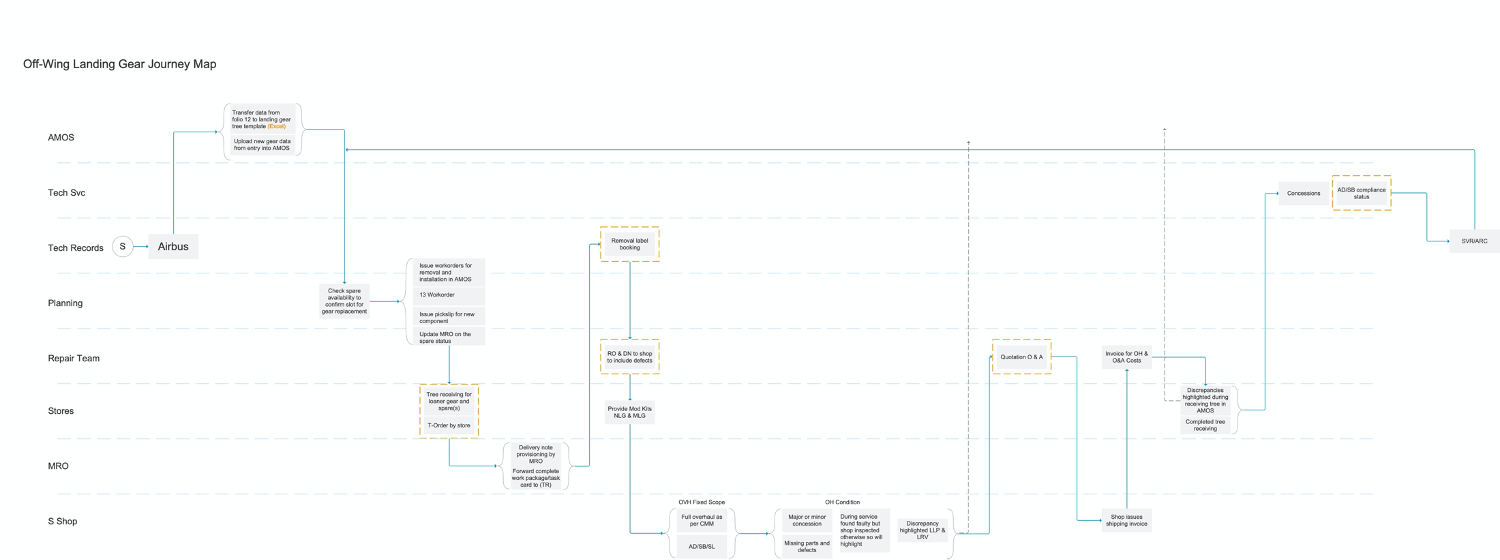
Air Asia’s challenges were similar to those of Cathay, and they had us working on 4 different areas of airline operations, from aircraft utilization and pilot flight habits, to landing gear repairs.
Queensway Carleton Hospital, Ottawa, Canada
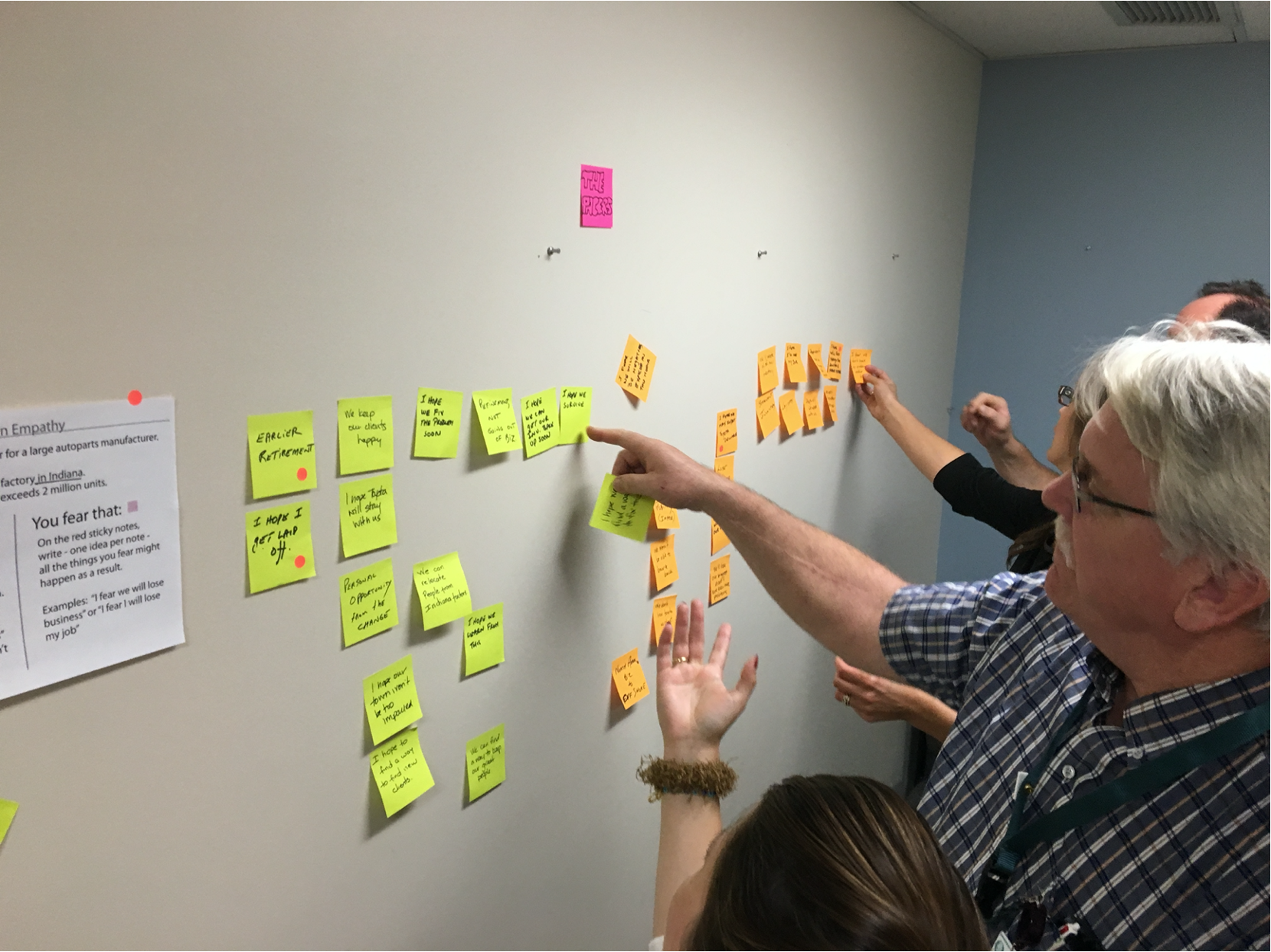
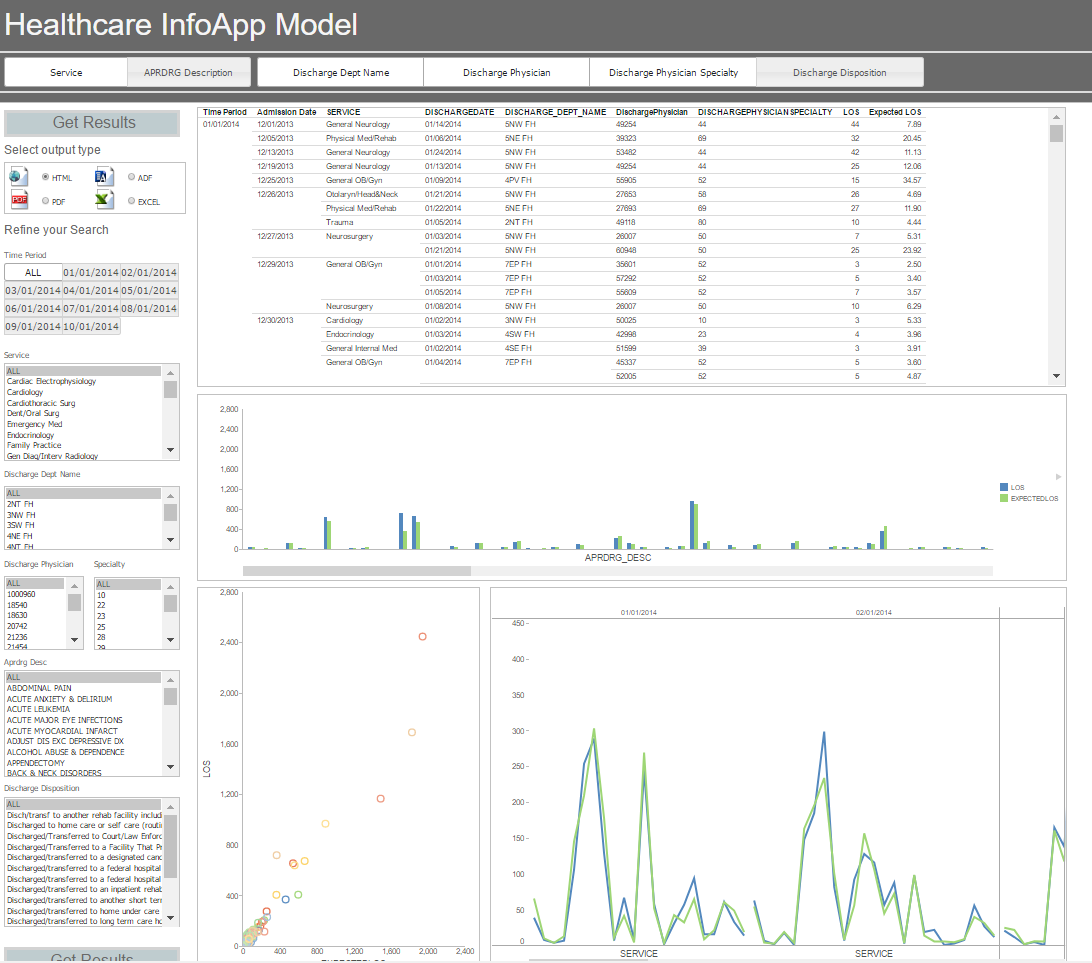
The hospital was an Information Builders customer, and we went for three days to help them use WEBFocus more efficiently, by understanding their business better and playing off the strengths of their most successful ward managers.
Blue Cross Blue Shield, Detroit, Michigan

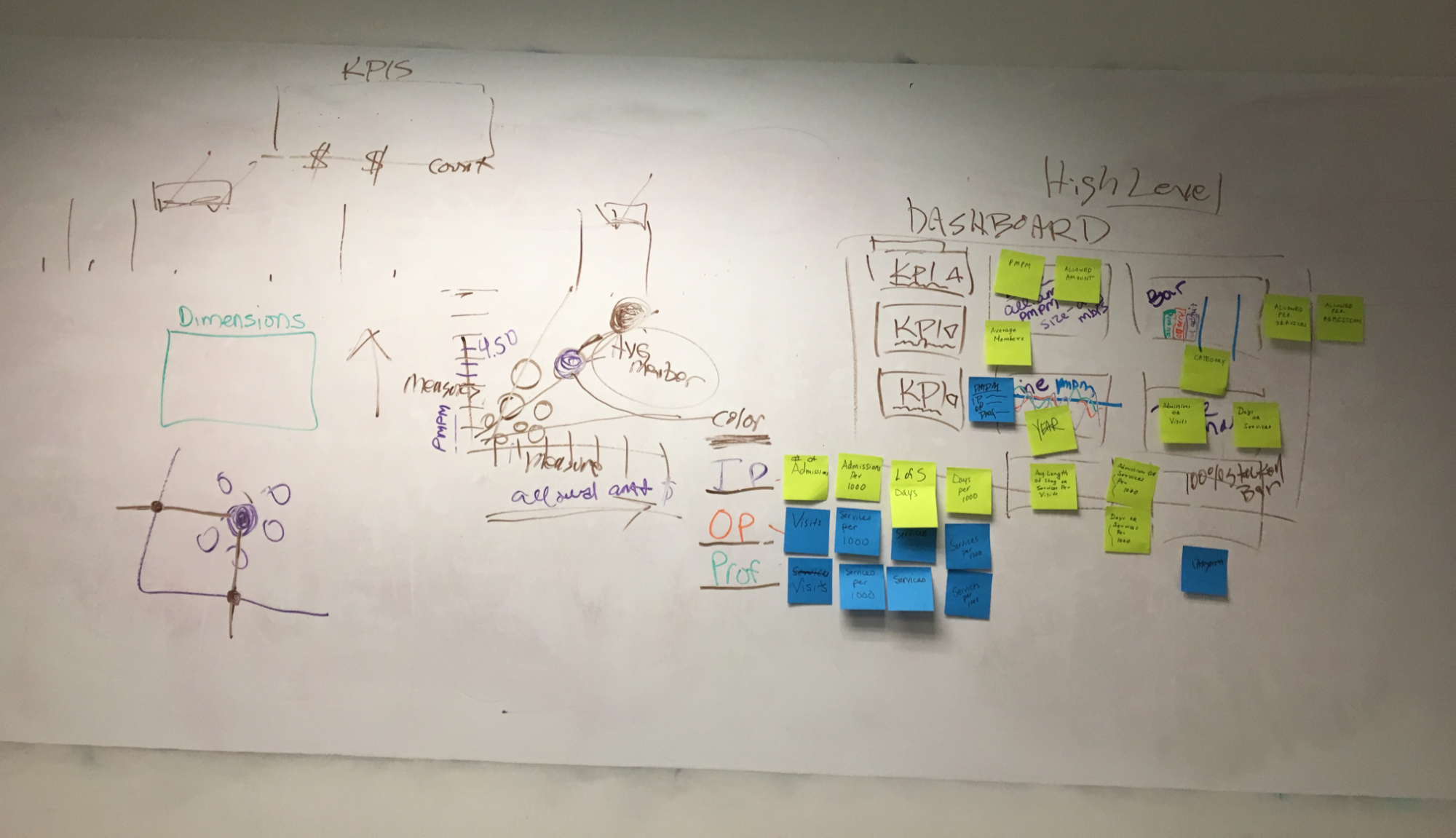
This was the start of an insurance adjuster’s application, starting at a manager level with filters and drilldowns to granularity for solving problems.
Information Builders, Amsterdam, Netherlands
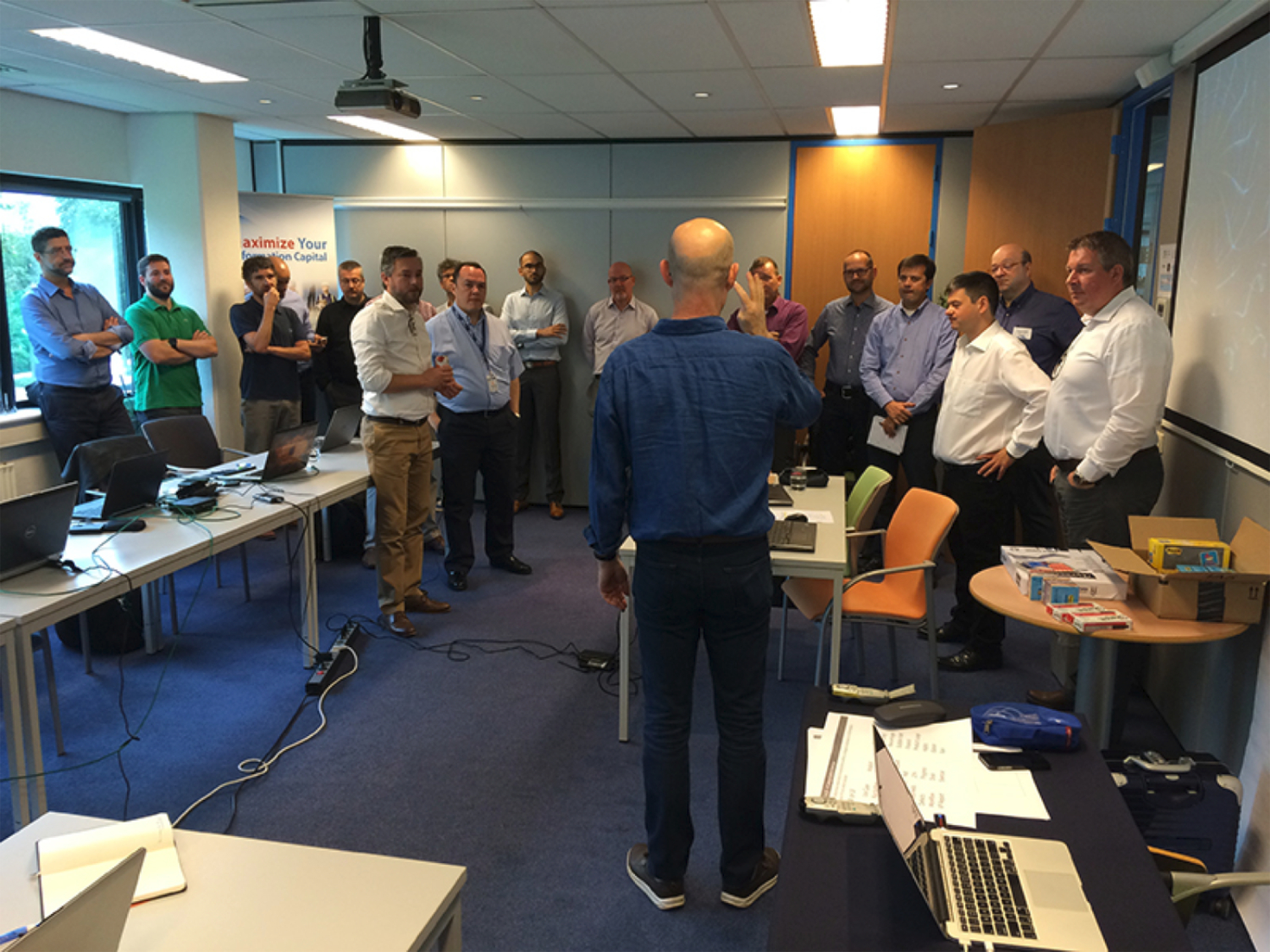
One of my jobs at Information Builders – the other was working with product and dev teams to redesign Web Focus interfaces for increased usability – was to training development engineers on ways to understand users’ needs better so that they could work independently and move contracts along faster and more efficiently.
Kroger, Cincinnati, Ohio
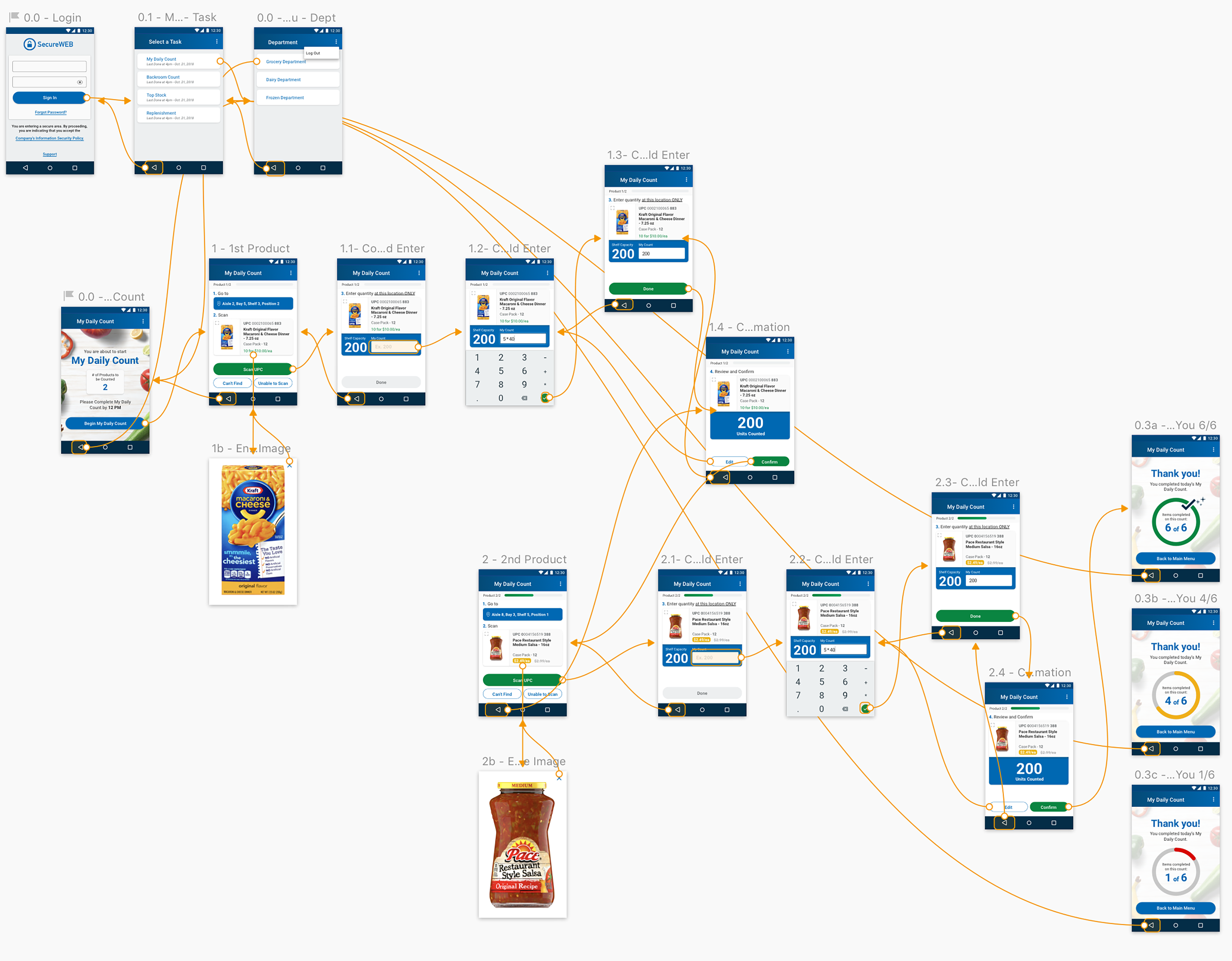
I led a team of designers and researchers to design new portable devices for in-store managers and other employees for the purpose of better inventory control and shelf restocking.
Personal Project – Cocktail Sleuth

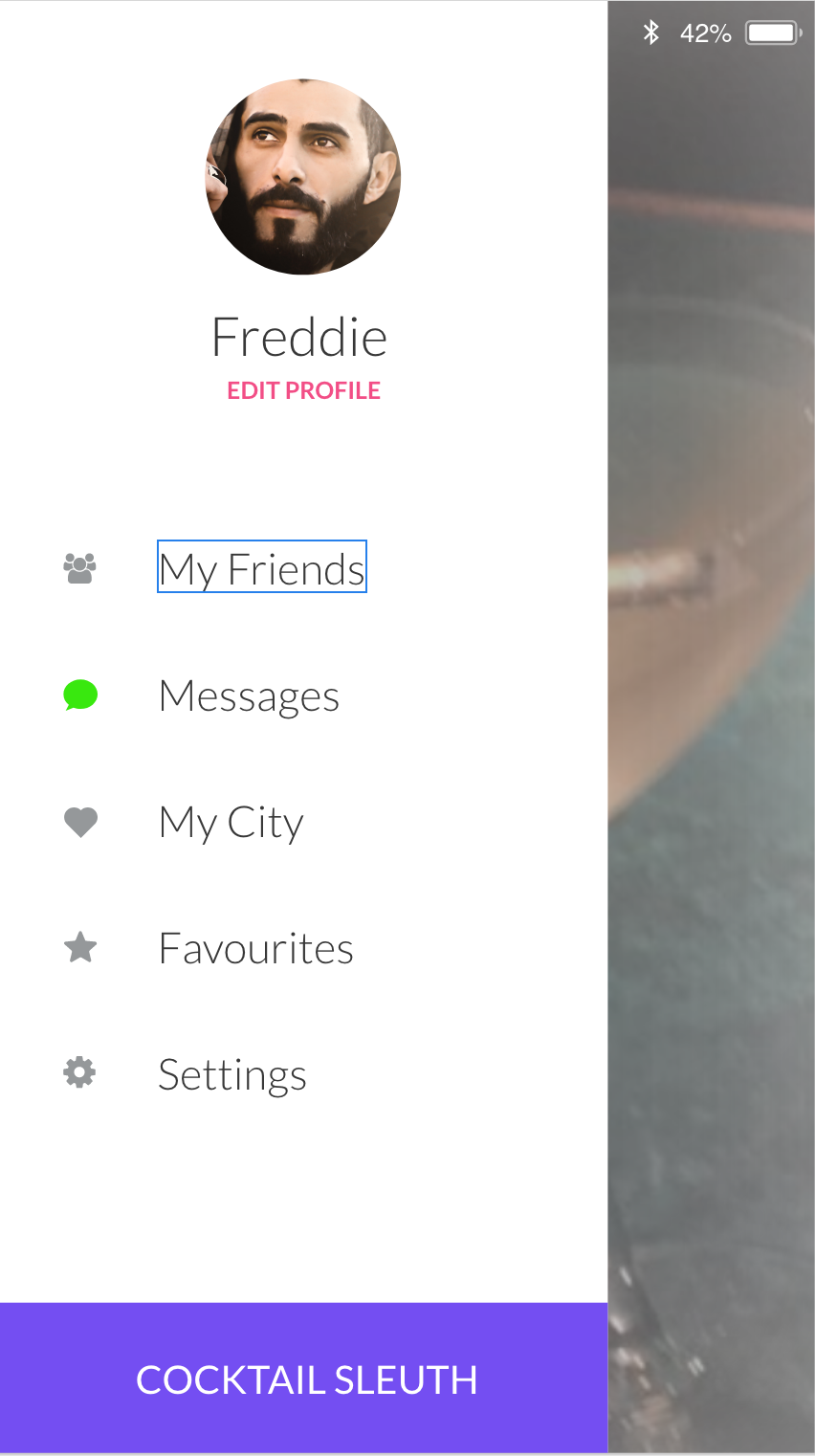

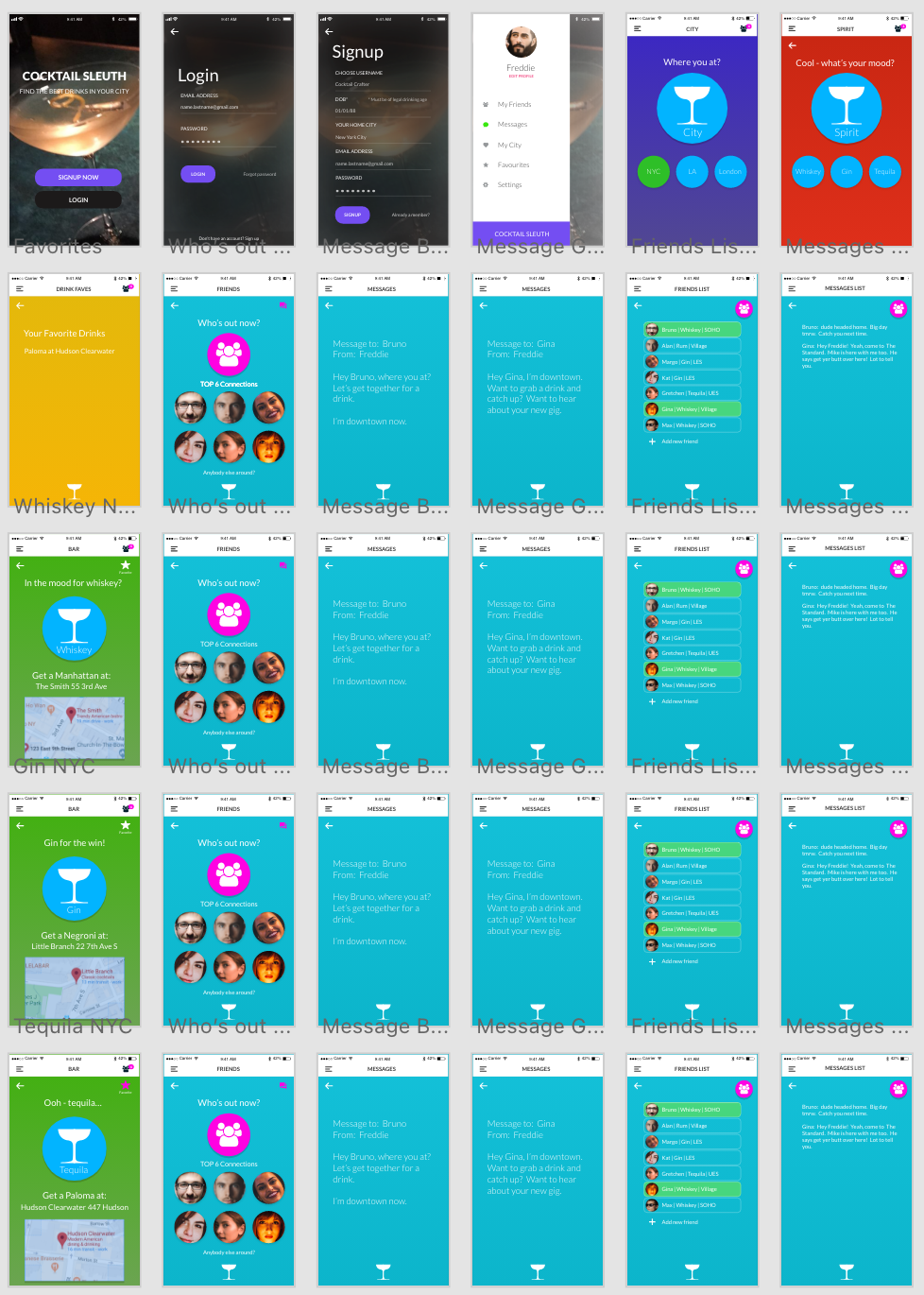
Cocktail Sleuth is an app idea I’m working on. It lets friends know who’s out and about for connections to enjoy each other’s company and make new friends while enjoying savory cocktails or mocktails.
Visual Aids
Deck for a Data Visualization Workshop
While dated a bit, this deck shows my path to teaching WebFOCUS devs how to think about and design dashboards for Information Builders’ clients.
Mind-Maps
I’ve also been very successful in employing mind-maps to explain UX concepts to teams before we start to work. This is especially helpful with cross-functional teams that have been assembled for specific tasks.

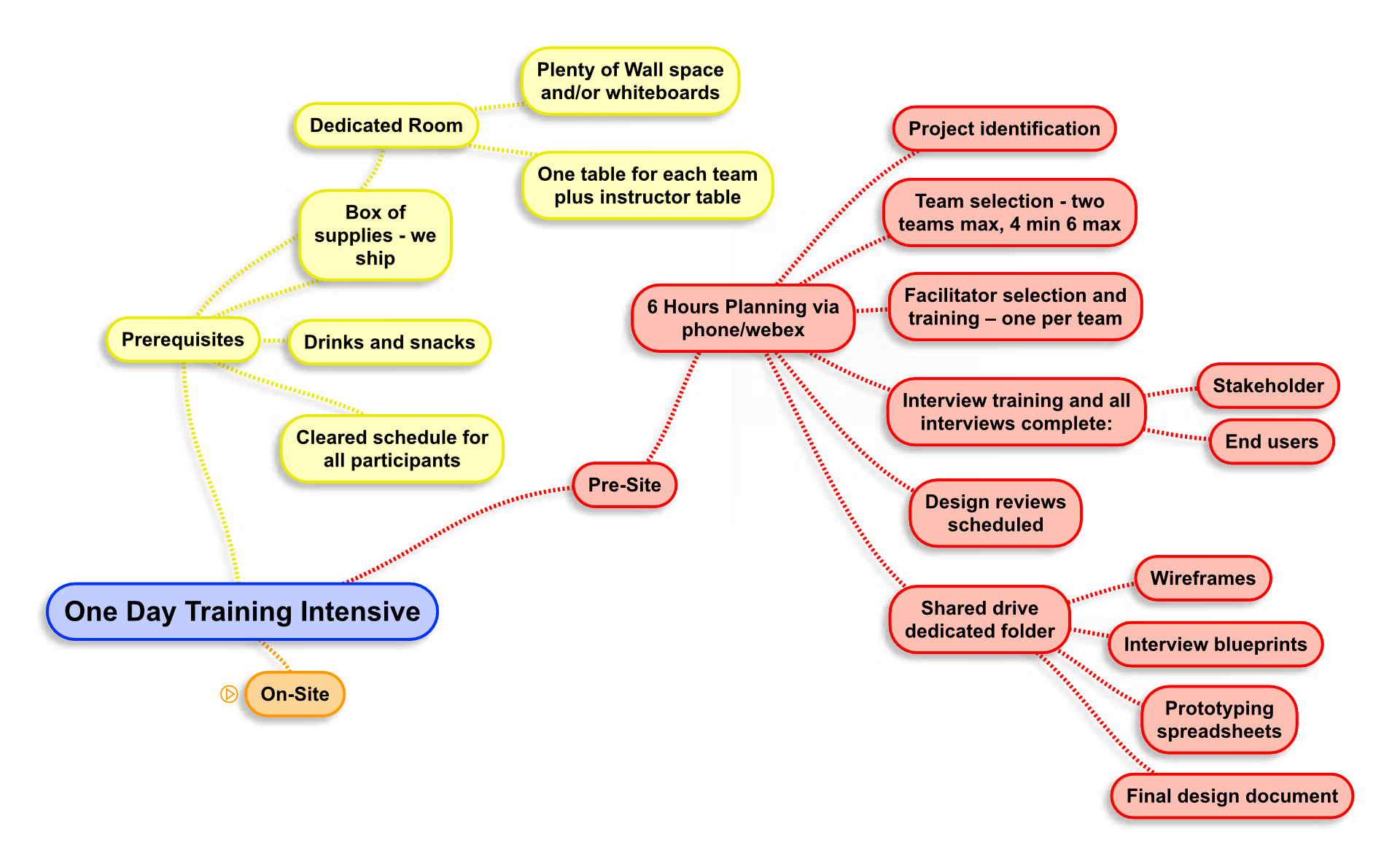
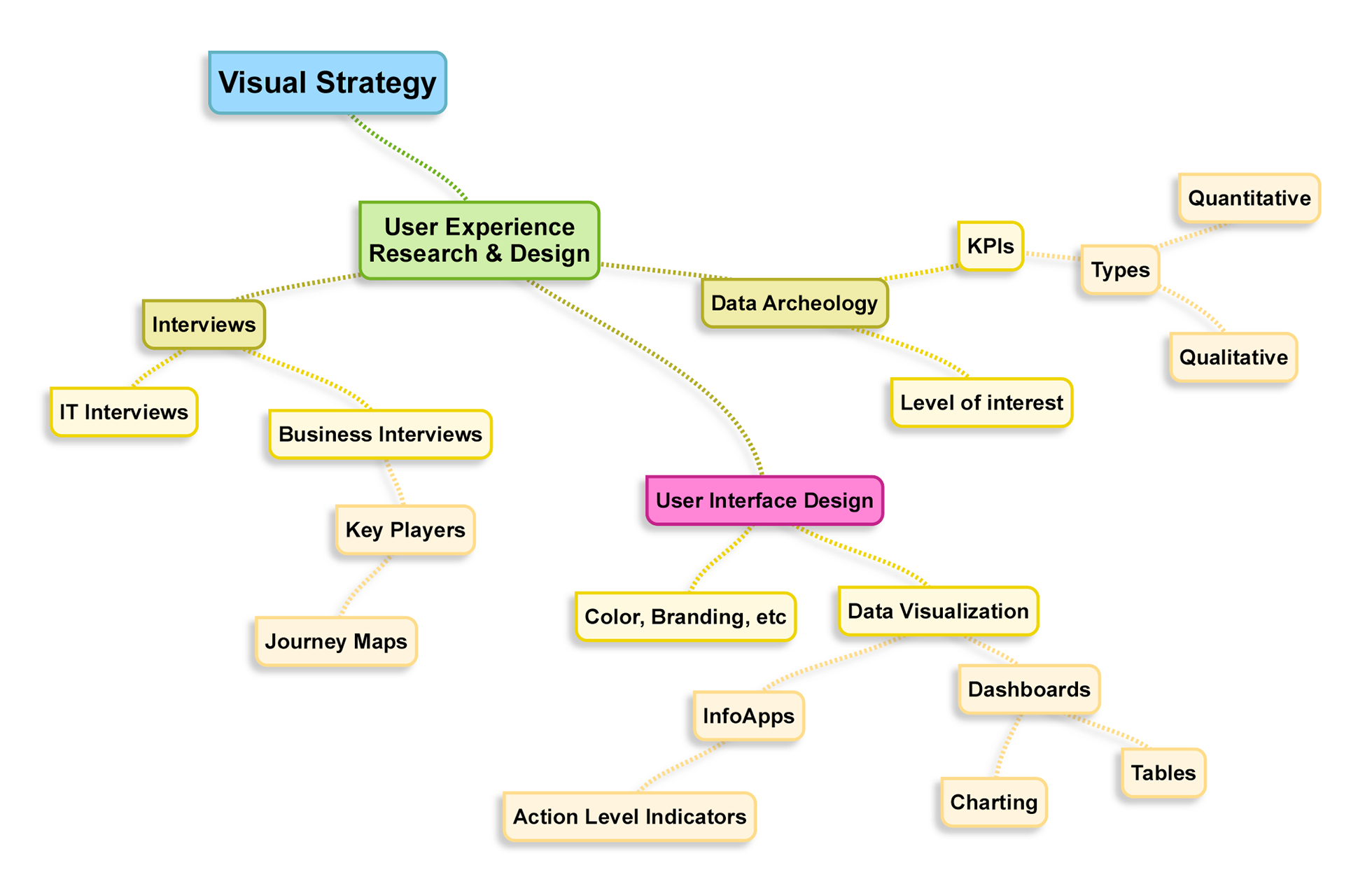
This is a consolidated look into my life as a UXer. There are many stories to tell at the right time and place. Thanks – Jeff
